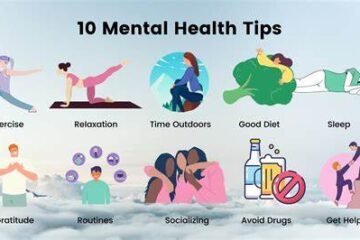Pranayama, an ancient practice of controlled breathing, is gaining recognition for its significant health benefits of doing pranayama. Rooted in yoga, pranayama involves various breathing techniques designed to increase oxygen flow, promote mental clarity, and balance your body’s energy. In this article, we’ll explore the 10 key health benefits of incorporating pranayama into your daily routine. Whether you’re new to yoga or experienced in mindfulness practices, pranayama can offer a wealth of advantages for both physical and mental well-being.
1. Improves Lung Capacity and Respiratory Health
One of the most prominent health benefits of doing pranayama is its ability to strengthen the lungs. Regular practice of pranayama techniques like Kapalbhati and Anulom Vilom helps improve lung capacity by encouraging deeper, more controlled breathing. This not only enhances respiratory health but also increases oxygen intake, which is vital for the body’s functions.
Key Benefit:
- Increases lung capacity
- Improves breathing efficiency
- Enhances oxygen circulation
2. Reduces Stress and Anxiety
Pranayama is well-known for its calming effects on the nervous system. By focusing on controlled breathing, you activate the parasympathetic nervous system, which helps reduce stress and anxiety. The health benefits of doing pranayama include a reduction in cortisol (the stress hormone), leading to a sense of tranquility and mental clarity.
Key Benefit:
- Reduces stress and anxiety
- Promotes relaxation
- Balances emotions
3. Boosts Mental Clarity and Focus
Practicing pranayama helps improve concentration and mental clarity. It clears the mind of distractions and enhances your ability to focus on the present moment. This is especially beneficial for people who experience mental fog or struggle with focus during work or study.
Key Benefit:
- Improves concentration
- Enhances mental clarity
- Increases productivity
4. Improves Blood Circulation
The deep breathing involved in pranayama enhances blood circulation by expanding the chest and increasing blood flow to various organs. Better circulation helps deliver oxygen and nutrients more efficiently, which can improve overall health and energy levels.
Key Benefit:
- Enhances blood circulation
- Improves heart health
- Boosts overall vitality
5. Strengthens the Immune System
Pranayama helps activate the body’s relaxation response, which can help strengthen the immune system. By improving circulation and reducing stress, pranayama allows the body to function more efficiently and protect itself from illnesses.
Key Benefit:
- Strengthens the immune system
- Reduces the risk of illnesses
- Enhances overall well-being
6. Balances Hormones
Consistent practice of pranayama can help regulate the endocrine system, which is responsible for hormone production. By promoting relaxation and reducing stress, pranayama can help balance cortisol, insulin, and thyroid hormones, leading to improved hormonal health.
Key Benefit:
- Balances hormone levels
- Regulates cortisol, insulin, and thyroid function
- Supports healthy metabolic processes
7. Promotes Better Digestion
Pranayama helps stimulate the digestive system by increasing blood flow to the abdominal organs. Certain pranayama practices, such as Bhastrika, stimulate the digestive fire (Agni) and can improve digestion, reduce bloating, and increase nutrient absorption.
Key Benefit:
- Stimulates the digestive system
- Reduces bloating and indigestion
- Improves nutrient absorption
8. Enhances Sleep Quality
If you struggle with insomnia or poor sleep quality, pranayama can be a game-changer. By calming the mind and promoting relaxation, pranayama can help reduce insomnia and ensure more restful, restorative sleep. It also lowers the risk of sleep disorders caused by stress or anxiety.
Key Benefit:
- Improves sleep quality
- Reduces insomnia
- Promotes deep, restorative sleep
9. Supports Weight Loss
Pranayama can also contribute to weight loss by reducing stress and balancing hormones. As it helps manage cortisol levels, pranayama can prevent emotional eating and cravings caused by stress. Moreover, deeper breathing increases metabolic rate, which can aid in weight management.
Key Benefit:
- Reduces stress-induced cravings
- Balances metabolism
- Supports weight loss efforts
10. Enhances Emotional Well-Being
The practice of pranayama encourages mindfulness, which has a direct impact on emotional well-being. Regular practice helps reduce negative emotions like anger, frustration, and sadness. By bringing awareness to the breath, pranayama encourages emotional stability and a positive outlook on life.
Key Benefit:
- Reduces negative emotions
- Enhances emotional stability
- Promotes positivity and mental peace
How to Incorporate Pranayama into Your Daily Routine
If you want to reap the health benefits of doing pranayama, it’s important to start slowly and incorporate it into your daily routine. Here are some easy ways to practice pranayama:
| Pranayama Technique | Description | Best For |
|---|---|---|
| Anulom Vilom (Nadi Shodhana) | Alternate nostril breathing that balances both sides of the body and mind. | Stress relief, mental clarity |
| Kapalbhati | Rapid exhalations that cleanse the respiratory system and energize the body. | Lung health, boosting energy |
| Bhastrika | Forceful inhalations and exhalations that stimulate the abdominal muscles. | Digestive health, metabolism boost |
| Ujjayi Pranayama | Slow, deep breathing with a slight constriction in the throat, creating a sound. | Stress reduction, sleep improvement |
Start by practicing these techniques for just 10-15 minutes each day and gradually increase the duration as you become more comfortable.
Unlock the Health Benefits of Doing Pranayama
The health benefits of doing pranayama are vast and profound, ranging from improved lung function to enhanced mental clarity and emotional balance. Whether you’re looking to reduce stress, improve physical health, or achieve emotional stability, pranayama offers a simple yet effective solution. By incorporating pranayama into your daily routine, you can experience improved overall health and wellness, paving the way for a healthier, more mindful life.




